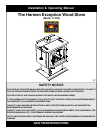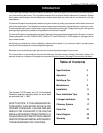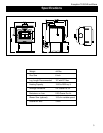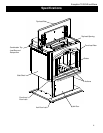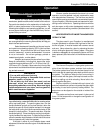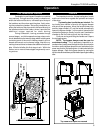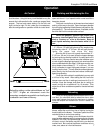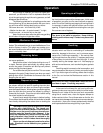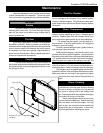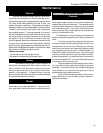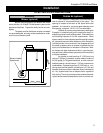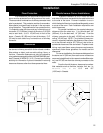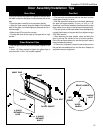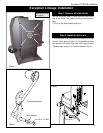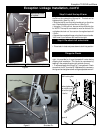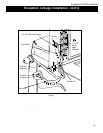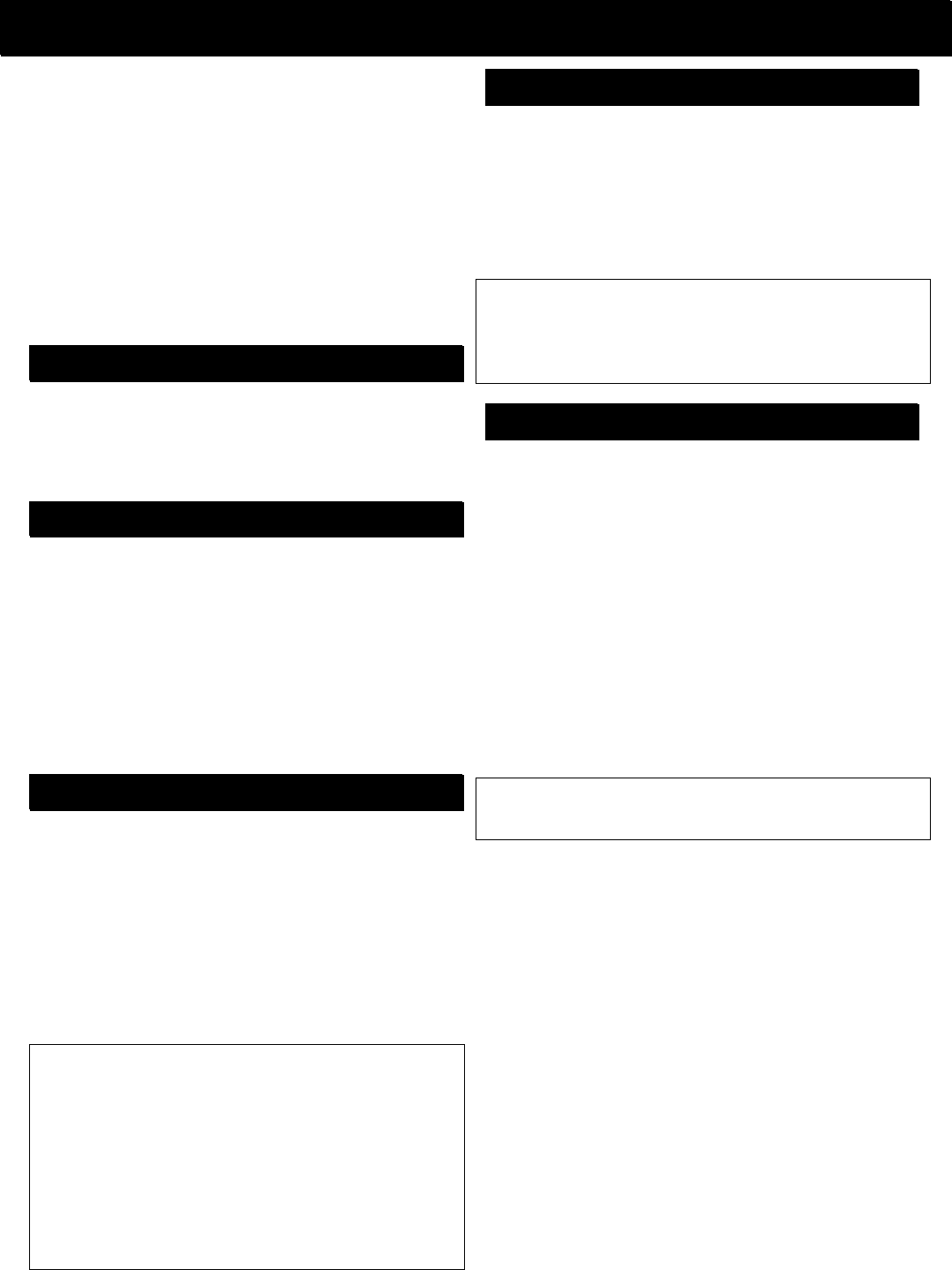
Exception TL200 Wood Stove
8
Operating as a Fireplace
The TL200 is tested and approved to be burned with
the front load door open and the damper open. In this mode
of operation you get a true fire sound as well as appear-
ance. Due to the crackling and popping of burning wood it
is necessary to place the optional screen over the door
opening. This prevents sparks from entering the room just
like a screen over a fireplace.
CAUTION
The stove is hot while in operation. Keep children,
clothing and furniture away. Contact may cause skin
burns.
Overfiring
Avoid overfiring your stove, a potentially hazardous
situation which can lead to overheating of combustible
materials, damage to the stove, and in extreme cases,
cause a fire. Overfiring is caused by: 1. Too much air flow-
ing through the stove too quickly. 2. Improper positioning
of the primary air control level too far to the right. 3. Inad-
vertently leaving the damper open or 4. Not keeping up
with routine maintenance, such as checking door gaskets
for wear.
Overfiring results in excessive fuel consumption, and
may cause parts of the stove or chimney connector to glow
red. If you notice signs of overfiring, reduce the air supply
to the fire, and review the Maintenance section in this
manual.
Never leave the stove unattended if either the ash or
load door is open. Overfiring may result.
In the event of a chimney fire, call your local fire de-
partment; make sure everyone is safely out of the house.
Reduce the air intake of the stove as much as possible
using the air control lever; close the bypass damper to
further restrict air flow. Do not throw water on the fire; this
can cause stove damage and create an even more danger-
ous situation. Have your chimney professionally cleaned
and inspected before resuming burning in your stove.
Operation
As you begin to operate your stove at higher tem-
peratures, you will notice a “hot” or unpleasant smell; this
is just the paint going through the curing process, and will
disappear after a few fires.
The following guidelines for air settings can be used
for wood burning; as you become familiar with your stove,
you will know which settings best heat your home.
• Minimum burn rate - air control fully to left.
• Medium low burn rate - air control moved 1" to right.
• High burn rate - air control fully to the right.
Note: At minimum burn rates the glass may get dirty
but will clean off again at higher burn rates.
Afterburner Viewport
This is a small ceramic window in the back of the
firebox. This window allows you to see the Afterburner Com-
bustion System in action. This glass may smoke up un-
der some conditions but will burn off again. It is OK if this
glass is not totally clean.
Removing Ashes
Some ash is good for proper burning. Too much ash
can cause problems.
Never let the ashes in the firebox build up to over 2"
in depth. Remove ashes periodically by raking a poker
across the grates. Excessive ash build-up can prevent
proper venting of exhaust gases.
Do not allow the ash pan to over flow. This can cause
damage to the grate. Empty the ash pan when you see it
getting close to full. (Remember to close ash door while
emptying the ash pan.)
Disposal of Ashes
The Exception was designed to provide access to
the ashpan without the need for opening the main door.
Before opening the ash door and removing the ashpan,
open the bypass damper. Wearing heavy protective gloves,
open the ash door and remove the ashpan by pulling it
forward by the handle. Close the ash door before taking
the ashes outside for safe disposal.
A good time to empty the ashpan is before loading.
This ensures that the ashes will be cold and safer to handle
than directly after poking the ashes down or tending the
fire.
WARNING: Ashes should be placed in a metal
container with a tight fitting lid. The closed con-
tainer of ashes should be placed on a noncombus-
tible floor or on the ground, well away from all com-
bustible materials, pending final disposal. If the
ashes are disposed of by burial in soil or otherwise
locally dispersed, they should be retained in the
closed container until all cinders have thoroughly
cooled.
Never use the ash disposal container for other
trash. Wood ash can be added to your garden or
compost.
Overfiring



